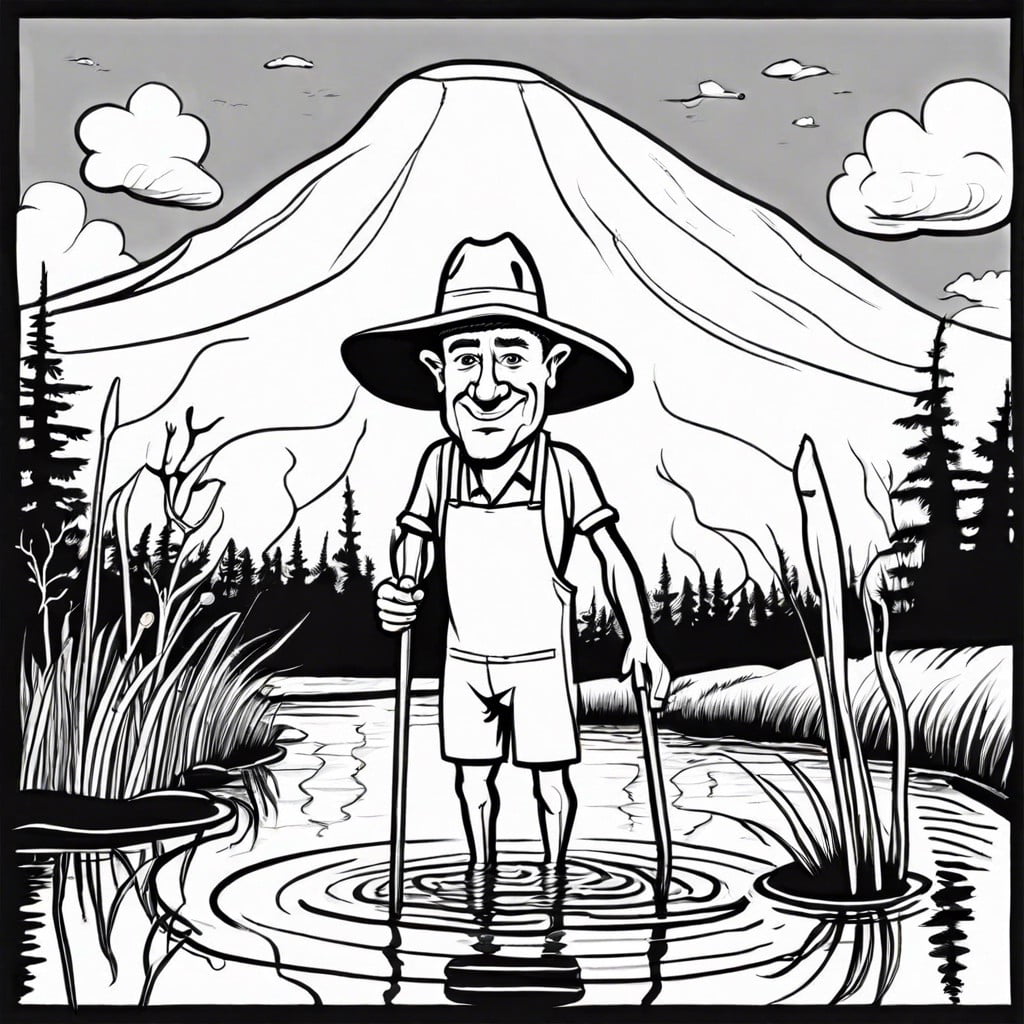Find out which freshwater ecosystem is the least productive and why it lags behind the rest.
Key takeaways:
- Arctic and alpine lakes are the least productive ecosystems.
- Bogs and fens are also among the least productive ecosystems.
- Oligotrophic lakes have low nutrient levels and are less productive.
- Perched wetlands have limited nutrient influx and are not highly productive.
- These ecosystems have unique characteristics and ecological importance.
Major Categories of Freshwater Ecosystems

Ready to dive into the diverse world of freshwater ecosystems? Let’s splash into the main categories:
Rivers and Streams: Picture endless moving water, flowing downstream like a never-ending marathon. These guys are constantly on the move, scouring the earth, creating all kinds of habitats along their journey.
Lakes and Ponds: Think of lakes and ponds as the couch potatoes of freshwater ecosystems. They just sit there, collecting water and giving various aquatic creatures a comfy home. They range from small potholes to massive bodies of water.
Wetlands: Marshes, swamps, and bogs, oh my! These soggy areas are like nature’s sponges, soaking up water and providing a rich, mushy habitat.
Estuaries: The best of both worlds! Estuaries are where freshwater meets the sea, creating a brackish wonderland for unique plants and animals.
Groundwater: Not all freshwater ecosystems are visible on the surface. Groundwater hidden below your feet supports many streams and lakes, making it like the secret agent of freshwater ecosystems.
Each category has distinct features and inhabitants, playing a crucial role in the planet’s water cycle and biodiversity.
Least Productive Category: Definition and Characteristics
The least productive freshwater ecosystems are those where plant and animal life is minimal. They’re like the underachievers of the watery world, but don’t underestimate them—they have their own charm.
Limited sunlight is a big deal. These ecosystems often exist in areas where sunlight struggles to reach, making photosynthesis a challenge. Imagine a dark coffee shop with no windows; it’s cozy but not exactly a greenhouse.
Nutrient scarcity plays a huge role. The water here lacks essential nutrients like nitrogen and phosphorus, which plants and algae need to grow. Think of it as a skinny grocery aisle with only canned beans and ramen.
Low temperatures are another factor. Colder waters slow down metabolism and growth for most organisms. It’s like trying to get motivated to work out in winter—good luck.
Water flow can be slow or stagnant. Without much movement, oxygen levels drop, making it hard for many species to thrive. Picture a sleepy small town where nothing much happens; it’s peaceful but not buzzing with energy.
Infertile soils typically surround these ecosystems. This means even the land around the water doesn’t contribute much to nutrient levels. Imagine trying to grow vegetables in a desert. Yeah, not ideal.
So, while they might not be bustling hubs of activity, these less productive ecosystems have their own unique set of characteristics that make them fascinating.
Examples of Least Productive Freshwater Ecosystems
Consider the arctic and alpine lakes, high-altitude lakes and ponds. These water bodies take the crown as the least productive. Their icy waters are so cold that even fish get chills. Low temperatures slow down metabolic rates, meaning aquatic life here is as laid back as a Sunday afternoon nap.
Then we have bogs and fens. These wetland types are drenched in acidity. With water that’s practically a sour lemon, not many organisms fancy calling it home. Nutrient levels? Think on a diet of rice cakes and celery sticks.
Oligotrophic lakes also make the cut. These beauties have crystal clear water, but don’t let that fool you. Clear water means low nutrients. Fewer nutrients mean a barren buffet table for plants and algae. These lakes are like an underwater ghost town.
Toss in some perched wetlands. These are wetlands sitting atop impervious surfaces, where water just can’t seep through. The result? Limited nutrient influx, leading to ecosystems that aren’t exactly throwing a hot tub party for microorganisms.
So yes, these places may not win any productivity awards, but they’ve got their own unique ecological charm.
Comparison With More Productive Freshwater Ecosystems
Let’s compare our underachieving freshwater ecosystems with their overachieving siblings.
Take lakes and ponds, for instance. The more productive ones, like eutrophic lakes, are bustling metropolises of aquatic life. They have nutrient-rich waters encouraging lush plant growth, abundant fish, and generally, a busy ecosystem. Algae throw wild parties every night.
On the other hand, oligotrophic lakes, the party-poopers in our story, have nutrient-poor waters. Their sparse algae and plant life mean fewer fish and less overall hustle and bustle. Picture a sleepy town where even the algae are on a strict curfew.
Rivers and streams also showcase this divide. Certain stretches, particularly those fast-moving and cold, tend to have lower productivity. It’s like trying to grow crops in a wind tunnel. In contrast, slower-moving, warmer segments can support a more boisterous range of species, with fish, plants, and microorganisms living it up.
Wetlands, rich in nutrients, draw in species like a buffet, hosting a vibrant feast of biodiversity. Meanwhile, bogs and fens (yes, these are real), with their acidic waters and minimal nutrients, host fewer, albeit specialized, party-goers.
Ecological Importance of Least Productive Ecosystems
Despite their lower productivity, these ecosystems are like that quirky cousin at family gatherings—essential, just in their own unique way.
They act as natural water filters, removing pollutants and improving water quality. Imagine them as Earth’s very own Brita pitchers.
They provide habitats for specialized species that thrive in such conditions, boosting biodiversity. Think of them as exclusive clubs for rare wildlife.
By supporting certain microorganisms, they play a crucial role in nutrient cycling. It’s like they’re the behind-the-scenes crew for the grand show of life.
They help regulate water flow and mitigate floods. Picture them as nature’s own speed bumps, slowing down water and preventing chaos.
Finally, they offer scientific insights. Researchers love studying these systems to better understand ecological processes, similar to how sci-fi fans dissect every frame of their favorite TV shows.